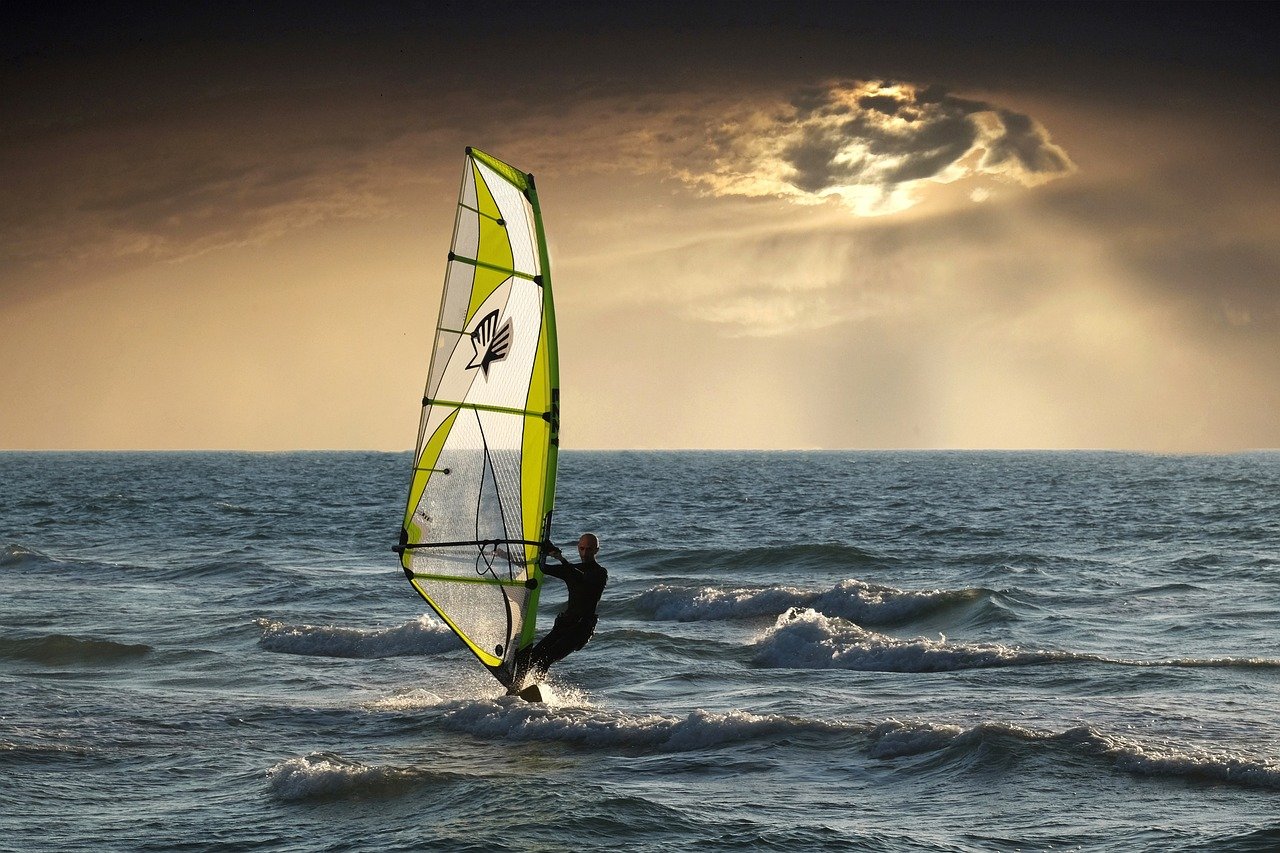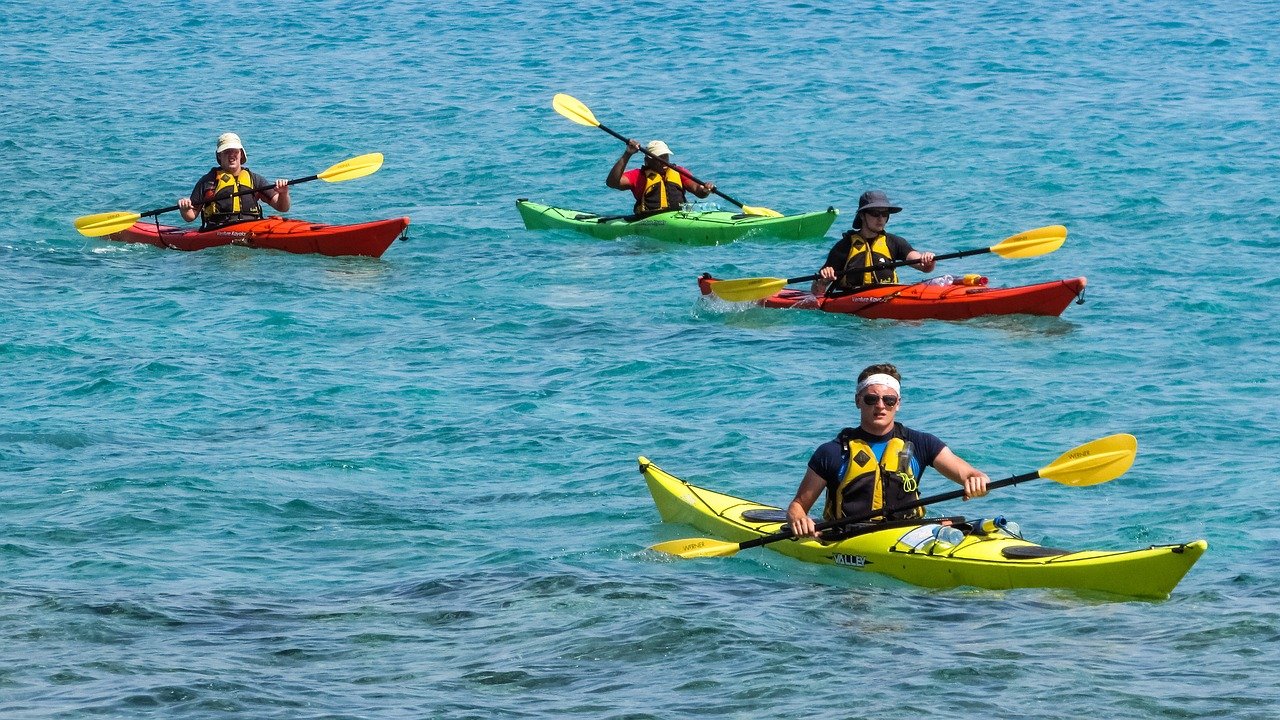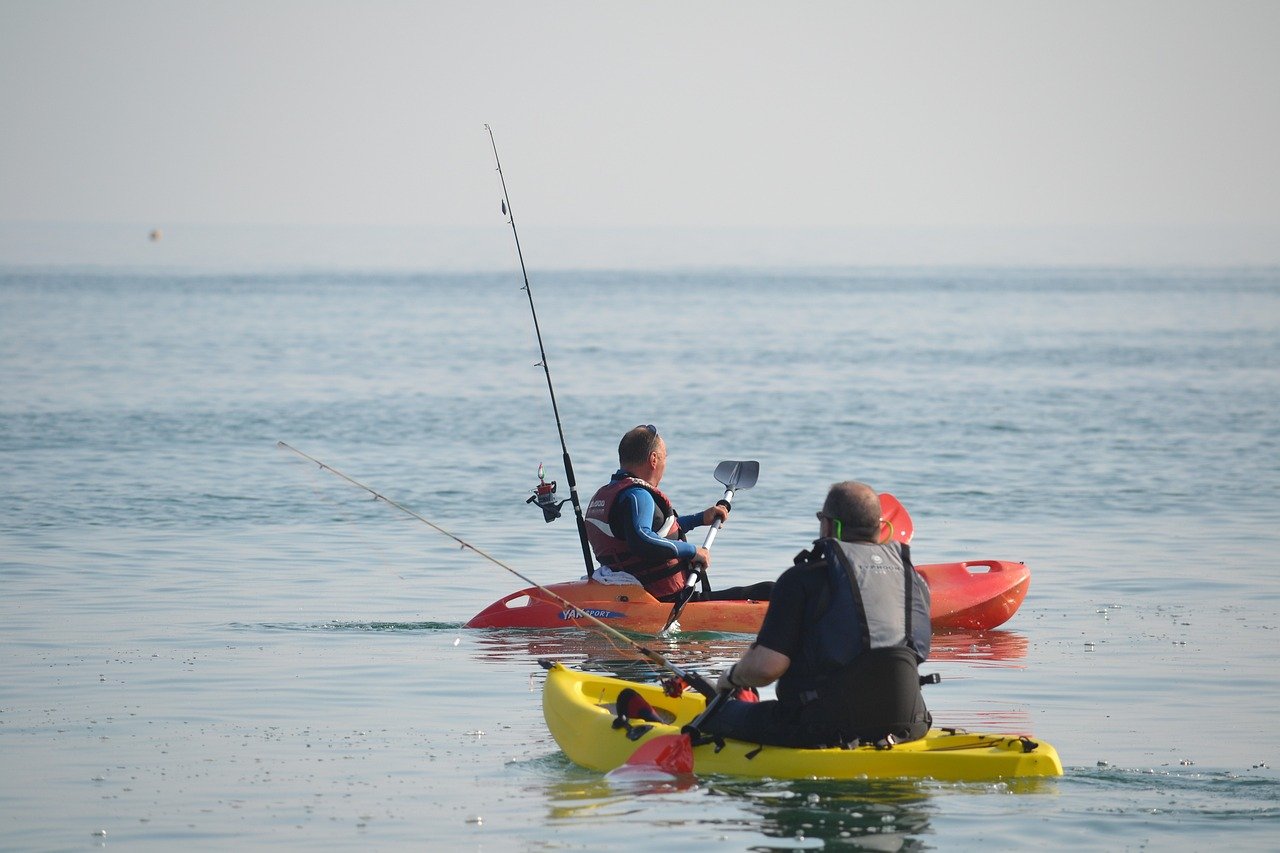When it comes to adventure best water sports, having the right equipment is crucial. Whether you’re a seasoned pro or a beginner, the right gear can make or break your experience. From ensuring your safety to enhancing your performance, the best equipment is designed to help you make the most of your time on the water. This guide covers the essential gear you need for a variety of popular water sports, providing insights into what makes each piece indispensable.
1. Stand-Up Paddle Boarding (SUP) Essentials
Stand-up paddleboarding is one of the most accessible and enjoyable best water sports, but it requires a specific set of equipment to ensure a smooth ride. The key pieces include a paddleboard, paddle, and personal flotation device (PFD).
- Paddleboard: The foundation of SUP, your paddleboard needs to match your skill level, body weight, and intended use. For beginners, stability is key, so a wider and longer board is ideal. More experienced paddlers may opt for narrower boards that offer speed and maneuverability. Best Stand Up Paddleboards of 2024
- Paddle: Your paddle is your means of propulsion, and its design significantly impacts your performance. Adjustable paddles allow you to tailor the length to your height and paddling style. Lightweight materials like carbon fiber or fiberglass can reduce fatigue during long sessions. There are review The 5 Best SUP Paddles.
- PFD (Personal Flotation Device): Safety should always be a priority, and a well-fitted PFD is essential. Look for options that are specifically designed for paddling, offering a balance between safety and comfort without restricting your movements. There are reviewed The 07 Best Life Jackets for Paddlers
- Leash: A paddleboard leash keeps you attached to your board, which is crucial in rough waters or windy conditions. There are coiled and straight leash options, with coiled being more common as it reduces drag in the water.
- Waterproof Bag: Keeping your essentials dry is a must. Waterproof bags or dry bags are available in various sizes and are designed to keep your phone, keys, and snacks safe from water damage. The 5 Best Waterproof Dry Bags.
2. Kayaking Gear
Kayaking offers a different thrill, requiring gear that balances comfort, performance, and safety. Whether you’re exploring calm lakes or navigating whitewater rapids, the right equipment makes all the difference.
- Kayak: The type of kayak you choose should depend on the kind of waters you plan to paddle in. Sit-on-top kayaks are great for beginners and warm weather conditions, while sit-in kayaks offer more protection from the elements and are better for colder environments. For whitewater, specialized kayaks with enhanced maneuverability are necessary. The 8 Best Inflatable kayak of 2024
- Paddle: Kayak paddles differ from SUP paddles in their shape and usage. A good paddle should be lightweight and durable, with blades designed to maximize efficiency in the water. The length of the paddle should match your height and the width of your kayak. The 8 Best Kayak Paddles | Balance Your Paddling Adventure
- Spray Skirt: If you’re using a sit-in kayak, a spray skirt is essential for keeping water out, especially in rough conditions. It forms a seal around your waist and the kayak cockpit, ensuring you stay dry and warm.
- Helmet: For whitewater kayaking, a helmet is non-negotiable. It protects your head from rocks and other hazards you might encounter in fast-moving water. Look for helmets specifically designed for water sports, with ample padding and ventilation.
- Dry Suit or Wet Suit: Depending on the water temperature, you’ll need either a wet suit or a dry suit. Wet suits provide insulation by trapping a thin layer of water against your body, which your body heat then warms. Dry suits, on the other hand, keep you completely dry and are ideal for colder conditions.
3. Surfing Gear
Surfing is a high-energy water sport that demands agility, strength, and the right gear to catch and ride the waves effectively.
- Surfboard: The most critical piece of equipment is, of course, your surfboard. Beginners typically start with longboards, which are easier to balance on and provide more stability. Advanced surfers might prefer shortboards, which are more maneuverable and allow for quicker turns.
- Leash: A surfboard leash is essential for keeping your board close after a wipeout. It attaches to your ankle and the tail of your board, preventing it from drifting away. The leash length should correspond to the length of your surfboard.
- Traction Pad or Wax: To maintain grip on your surfboard, you’ll need either wax or a traction pad. Wax is applied directly to the board’s surface, creating a sticky layer that helps keep your feet in place. Traction pads are adhered to the board and provide a more permanent solution.
- Wetsuit: Depending on the water temperature, a wetsuit may be necessary to keep you warm. Wetsuits vary in thickness and style, with full suits offering the most coverage and warmth, and spring suits providing more flexibility in warmer waters.
- Surfboard Bag: Protecting your surfboard during transport and storage is crucial to its longevity. Surfboard bags come padded to prevent dings and scratches, with some even offering thermal protection.
4. Windsurfing Equipment
Windsurfing combines the elements of surfing and sailing, requiring a unique set of gear that balances both disciplines.
- Windsurf Board: A windsurf board is similar to a surfboard but is designed to attach a sail. The board size and volume should be selected based on your skill level and the conditions you’ll be windsurfing in. Beginners often start with larger, more stable boards.
- Sail: The sail is what catches the wind and propels you forward. Sails come in various sizes, with larger sails generating more power and smaller sails offering better control in high winds. The material of the sail also impacts its performance, with lightweight materials being ideal for speed.
- Boom and Mast: The boom is the horizontal bar that you hold onto, while the mast is the vertical pole that supports the sail. Both need to be durable and lightweight, with some flexibility to handle the forces of the wind.
- Harness: A windsurfing harness allows you to hook into the boom, taking some of the load off your arms and allowing you to use your body weight to control the sail. Harnesses come in waist and seat styles, with the choice depending on personal preference and comfort.
- Foot Straps: These are attached to the board and allow you to lock your feet in place, providing better control and stability, especially in choppy conditions.
5. Snorkeling and Diving Gear
For those who prefer exploring beneath the surface, snorkeling and diving gear is essential for safely and comfortably enjoying the underwater world.
- Mask: A good-quality mask provides clear vision underwater and should fit snugly without causing discomfort. Look for masks with tempered glass lenses for durability and a silicone skirt for a watertight seal.
- Snorkel: A snorkel allows you to breathe while floating face down in the water. Choose a snorkel with a purge valve for easy clearing of water and a splash guard to keep out surface water.
- Fins: Fins increase your swimming speed and efficiency. The type of fin you choose depends on the activity—long, flexible fins are great for snorkeling, while shorter, stiffer fins are better for diving and maneuverability.
- Wetsuit or Rash Guard: Depending on the water temperature, you may need additional protection. A wetsuit provides warmth and buoyancy, while a rash guard offers protection from the sun and stings in warmer waters.
- Dive Computer: For diving, a dive computer is an essential tool that monitors your depth, dive time, and decompression limits, helping you dive safely within your limits.
6. Canoeing Equipment
Canoeing is a versatile water sport that can range from serene lake paddling to intense whitewater challenges. The right gear ensures safety and enhances your experience.
- Canoe: The canoe itself is the most significant piece of equipment. Canoes vary in size, shape, and material, with designs tailored for different environments, such as flatwater, whitewater, or even expedition canoeing.
- Paddle: Canoe paddles are single-bladed and vary in length depending on your height and the type of canoeing you’re doing. A well-balanced paddle with a comfortable grip is essential for efficient paddling.
- PFD (Personal Flotation Device): Safety is paramount in canoeing, and a PFD is a must-have. Choose one that is comfortable, allows full range of motion, and is specifically designed for canoeing.
- Dry Bag: Keeping your gear dry is important, especially on longer trips. Dry bags come in various sizes and are essential for protecting your belongings from water exposure.
- Portage Yoke: For those who plan on portaging—carrying the canoe over land—a yoke that fits comfortably on your shoulders is essential for transporting the canoe over longer distances.
7. Kiteboarding Gear
Kiteboarding combines elements of wakeboarding, windsurfing, and paragliding, making it a high-adrenaline water sport that requires specialized equipment.
- Kite: The kite is your main source of propulsion and comes in various sizes depending on the wind conditions and your skill level. Beginners usually start with larger, more stable kites, while advanced kiteboarders may opt for smaller, more responsive kites.
- Board: Kiteboards are similar to wakeboards but are lighter and designed for different riding styles, including freeride, freestyle, and wave riding. The size and shape of the board will affect your performance in various conditions.
- Harness: A kiteboarding harness is used to connect you to the kite’s control bar. There are waist and seat harnesses,




